New Dam planned for Biodiversity Hotspot
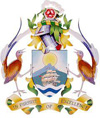 Controversial Tweed Shire Council has a history of making poor environmental decisions that are hugely unpopular with the largely Green-oriented residents. It is the second most complained about council in New South Wales. However in November 2010 the councillors voted for the worst possible blunder which will be recorded as a major crime against Nature.
Controversial Tweed Shire Council has a history of making poor environmental decisions that are hugely unpopular with the largely Green-oriented residents. It is the second most complained about council in New South Wales. However in November 2010 the councillors voted for the worst possible blunder which will be recorded as a major crime against Nature.
Byrrill Creek, NSW
In October 2010 the residents in Tweed Shire did something that had never been done before in the history of World Rally Championships – they succeeded in ridding Tweed and neighbouring Kyogle Shire of the rally. There were many reason for this, not the least of which was the threat to already threatened and endangered species living en route.
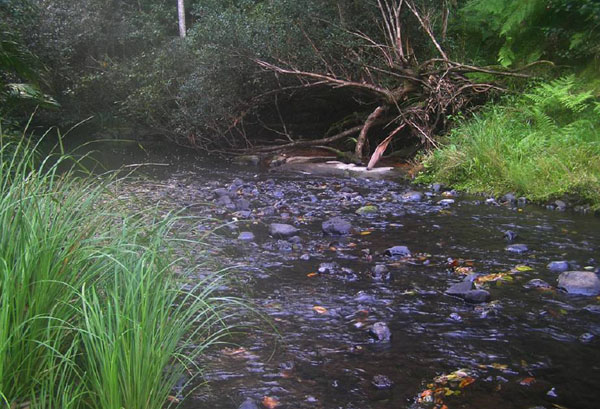
One of the routes, pristine and idyllic Byrrill Creek - home to platypus, diminishing koalas and 45 threatened and endangered fauna, 26 threatened and endangered flora and adjacent to two World Heritage National Parks – had such fierce opposition from locals that the race had to be stopped after only 3 cars went through. News travelled as far as New York Times that rocks had been thrown at the cars – which was 6 months later denied by local police.
Short Lived Euphoria
The residents only had a few weeks to bask in the glory of success when a far worse environmental travesty was foisted on them by the local council – the building of a 36,000 ML dam in Byrrill Creek, against advice of their staff planners and the community working group. Such a dam would flood 400 hectares of this high conservation value, riparian area.
Sustainable water recommendations such as mandatory water tanks for new houses, dual reticulation, stormwater harvesting, grey-water recycling, wise water use were not even considered as an option.
The raising of Clarrie Hall dam nearby, recommended as the #1 option by council staff and the CWG, was rejected in favour of building a controversial dam at Byrrill Creek. The councillors voting in favour of Byrrill Creek dam must have influential friends living at Clarrie Hall dam is all I can say because that would be by far the cheaper, simpler and less controversial option.
While the shire already has almost enough water to support the existing population until 2036, the given reason for the building of a new dam is the addition of two new mega housing developments on the coast which would double the population effectively. It would seem sensible for the new housing developments to meet their own water needs with sustainable water management such as in the U.K. and Singapore.


 (Cr Skinner, Cr Polglase and Cr Youngblutt)On November 1st, Mayor Kevin ‘Green’ Skinner (who declared on his election his commitment to 'preserving this lovely pristine environment'(see http://www.tweednews.com.au/story/2010/09/21/skinner-tweeds-new-mayor/ ) used his casting vote to push the motion for a dam through, contrary to convention to vote with staff recommendations. The ‘Three Stooges’ pro-development councillors who voted for the dam, also dogged a motion for an independent review of water demand management for the shire.
(Cr Skinner, Cr Polglase and Cr Youngblutt)On November 1st, Mayor Kevin ‘Green’ Skinner (who declared on his election his commitment to 'preserving this lovely pristine environment'(see http://www.tweednews.com.au/story/2010/09/21/skinner-tweeds-new-mayor/ ) used his casting vote to push the motion for a dam through, contrary to convention to vote with staff recommendations. The ‘Three Stooges’ pro-development councillors who voted for the dam, also dogged a motion for an independent review of water demand management for the shire.
Councillor van Lieshout was unable to vote due to her husband's ownership of land that would be part of the area at Mebbin that would be inundated. The other three councillors Cr Milne, Cr Holdom and Cr Longland lodged a recission motion and the following week an extraordinary meeting was held which which resulted in the same outcome - 3-3 tied with the Mayor once again using his casting vote to push the dam through in spite of receiving hundreds of requests from residents not to. The council also received letters from 5 District Ratepayers Associations representing 70% of the shire's population. They all strongly condemned the dam proposal.
When these three councillors, who only received 25% of the vote at the council elections in 2008, use their power to force a decision that is unwanted by the majority of the residents and ratepayers, it makes you wonder what is their motivation.
Even the General Manager (who was on the Board of the Repco Rally) is not in favour of a dam at Byrrill Creek. Nor is Max Boyd (former Administrator) and Nationals MP for Tweed Geoff Provest. They realise that the NSW Weirs policy is opposed to new dams. The Federal EPBC Act stopped the Traveston Dam on Mary River Qld due to its nationally endangered species but there are more federally threatened and endangered species at Byrrill Creek. Forging ahead for a dam is fraught with legal difficulties and may well be rejected by the government after many years and much money wasted. Who pays for all the costs involved in planning the dam, legal costs, amounting to millions of dollars? Why ratepayers of course! Not the Three Stooges, that’s for sure.
If they were wise they would raise Clarrie Hall dam (which needs repairs anyway) to ensure the shire’s water needs are met by 2036. However, while the raising of Clarrie Hall dam is less environmentally destructive, nevertheless it will negatively impact on the threatened species there. By far the best option is sustainable water options.
Environmental Reasons to Oppose a Dam
1. It threatens two adjacent World Heritage areas. Byrrill Creek is an identified and important wildlife corridor between three National Parks, two of which are World Heritage listed (Border Ranges NP and Mount Warning NP) and the third (Mebbin NP) is currently under consideration for inclusion of World Heritage status. Since 11 hectares of Mebbin NP would be inundated, that part of Mebbin NP would not be eligible for WH status.
Byrrill Creek is geologically part of the inner ring dyke system of the extinct volcanic complex of Mt Warning. This shield volcano is one of the best preserved in the world.
2. Byrrill Creek and surrounding National Parks provides habitat for a high level of flora and fauna, threatened, vulnerable or endangered within the TSC (State) and EPBC (Federal) listings. An assessment of priority fauna species identified 42 priority flora species, 37 priority fauna species and 6 amphibians, 7 reptiles, 13 birds and 11 mammals.
According to Dr S. Phillips of Biolink Ecological Consultants, there are 45 threatened fauna species in a 5km radius of Byrrill Creek and 26 threatened flora, some of which are found nowhere else in the world, including:
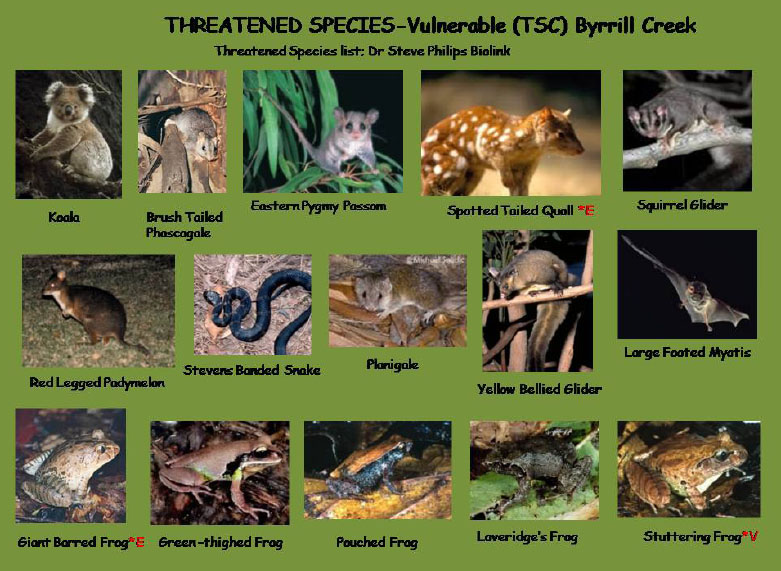
Byrrill Creek Koala, Brush Tailed Phascogale, Eastern Pygmy Possum, Spotted Tailed Quoll, Squirrel Glider, Red Legged Pademelon, Stephens Banded Snake, Byrrill Creek Planigale, Yellow Bellied Glider, Large Footed Myotis, Giant Barred Frog, Green Thighed Frog, Pouched Frog, Loveridge’s Frog, Stuttering Frog, Barking Owl, Marbled Frogmouth, Masked Owl, Sooty Owl, Glossy Black Cockatoo, Barred Cuckoo Shrike, Powerful Owl, Red-Tailed Black Cockatoo, Square Tailed Kite, Wompoo Fruit Dove, Albert’s Lyrebird, Black Breasted Buttom Quail, Rose-Crowned Fruit Dove, Rufous Scrub Bird, Bush Hen.
The pouched frog is found only in Tweed shire. This remarkable frog leaves its eggs under leaves, not in the water. When they hatch the hatchlings crawl on the back of the male frog where it has two pouches. It is there that they live till big enough to leave.
 Ironically enough, the Albert's Lyrebird is on the Tweed Shire council's crest. In NSW, this species occurs in the Northern Rivers Area only, occurring west to the Acacia Plateau in the Border Ranges and reaching its eastern and southern limits in the coastal range south-west of Ballina. It is found nowhere else in the world. Will they have to change their crest when it becomes locally extinct due to the dam going ahead?
Ironically enough, the Albert's Lyrebird is on the Tweed Shire council's crest. In NSW, this species occurs in the Northern Rivers Area only, occurring west to the Acacia Plateau in the Border Ranges and reaching its eastern and southern limits in the coastal range south-west of Ballina. It is found nowhere else in the world. Will they have to change their crest when it becomes locally extinct due to the dam going ahead?
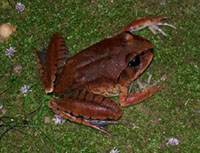
The Giant Barred Frog (mixophyes iterates) is endangered under the EPBC Act. It is one of the largest frogs in Australia. A three month study was conducted on this frog in Mebbin National Park.
According to Dr Steve Phillips of Biolink Ecological Services there are also two endangered ecological communities that would be at risk. There are 15-17 species at risk of local extinction in the lowland rainforest if it were be inundated in the case of a dam built in Mebbin National Park.
3. Under the Border Ranges Biodiversity Management Plan, the Tweed Caldera (of which Byrrill Creek is an important part) is a recognised priority area for biodiversity management. So why is this area even being considered for a dam? It is an area of high conservation value with no less than six ecological assessments classifying Byrrill Creek catchment as a site of the highest conservation value riparian status in the Tweed Shire.
Stressed Rivers Assessment Report 1999 (NSW Land & Water Conservation)
Tweed Riparian Restoration Prioritisation Report 2003 (Ecosure, Burleigh Heads)
Tweed Shire Vegetation Management Strategy 2004
NRCMA Byrrill Creek Riparian Rehabilitation Project 2006
PAS Key Corridor Connections Project 2009 and 2010
A local Byrrill Creek Fauna & Flora Survey by J. Gardner 2009
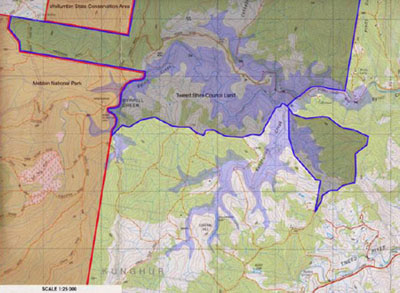
Currently there has been no complete fauna & flora assessment of the proposed dam site. There needs to be a comprehensive new assessment of the true ecological significance of Byrrill Creek catchment.
If a dam went ahead, irreplaceable rainforest would be flooded at Mebbin NP. Lance Tarvey of NPWS, Murwillumbah, considers these the most valuable in diversity of species and irreplaceable.
4. The Stressed Rivers report DLWC 1999 classed the mid Tweed River as already stressed due to water extraction at Clarrie Hall Dam and it has been identified by NPWS for conservation. Another dam would exacerbate this problem.
Financial Reasons to Oppose a Dam
Over the last three years a total of $546,000 has been allocated in grants to the Byrrill Creek area for restoration, landcare and conservation projects. All of this would have been for nought.
The cost to build a dam at Byrrill Creek would be $67 million compared to $35 million to raise the wall at Clarrie Hall dam.
Furthermore to proceed with a dam when there is a high possibility it will be rejected is wasting millions of ratepayers' money when it didn't need to be. Traveston Dam was rejected on the grounds of endangered species and the Qld government wasted $100 million of taxpayers' money in the process - for nothing.
Dams only have an average lifespan of 50-100 years before they fail. What a waste of time, money and irreplaceable biodiversity for old-school mentality!
Sustainability Issues Ignored
Social and government trends are towards low impact water management and harvesting strategies (stormwater and rainwater harvesting, dual reticulation, greywater use and reduced demand through efficient water use. The Tweed community overwhelmingly called for the latter practices to be enforced and identified a dam at Byrrill Creek as the last of possible options.
Indigenous Sites Under Threat
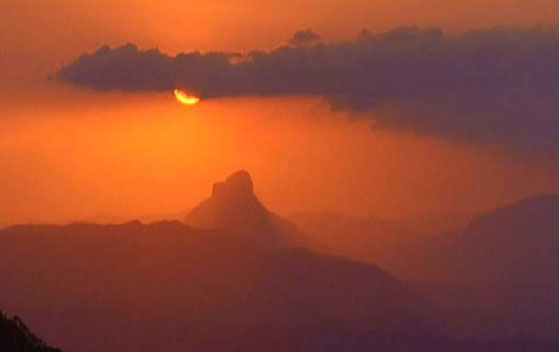 Mt Warning is a sacred site to the local aboriginal population and contains numerous cultural heritage sites within the Byrrill Creek area. There was a 3-day indigenous study showing 26 registered sites confined to the original aboriginal inhabitants (camp sites etc). In 2009 4 new sites were found. A dam would cut highly significant pathways. These sites are significant and important to the indigenous people living here.
Mt Warning is a sacred site to the local aboriginal population and contains numerous cultural heritage sites within the Byrrill Creek area. There was a 3-day indigenous study showing 26 registered sites confined to the original aboriginal inhabitants (camp sites etc). In 2009 4 new sites were found. A dam would cut highly significant pathways. These sites are significant and important to the indigenous people living here.
Indigenous leaders chose of the four options the following:
1. borewater
2. pipeline to SE Qld
3. Clarrie Hall dam
4. Byrrill Creek dam
Legal Reasons to Oppose a New Dam
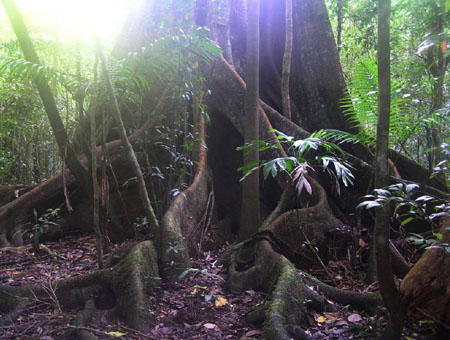
A dam at Byrrill Creek is currently prohibited. Section 9, Clause 6, In-River Dams of the Tweed River area Unregulated and Alluvial Draft Water Sharing Plan states that a dam at Byrrill Creek is prohibited because of its high conservation value. Should the council plan to transfer water interstate, this same plan within Part 13, Clause 36 says ‘Interstate transference of water allocations to or from these (Tweed’s) water sources are prohibited.’
Yet Tweed Council submitted amendments to both of these clauses in October 2009 allowing a dam at Byrrill Creek and allowing the transfer of water to and from the adjoining shires of South East Queensland and Rous.
Additionally, inundating areas of Mebbin National Park which are part of the Federal and NSW government and State Forestry North East Forest Agreement (NEFA) would necessitate the same levels of legislation.
There are twelve pieces of legislation that would need to approve this dam and it is highly likely that the Threatened Species Conservation (TSC) Act and the Environmental Protection & Biodiversity Conservation (EPBC) Act 1999 would not approve it due to all the state and federally threatened and endangered species.
The NSW Weirs Policy is for environmentally sustainable development. It gives fifteen reasons why no new dams should be built and has as a goal to halt, reduce and remediate the environmental impacts of dams. Furthermore, it disallows the construction of dams or even augmentation of a dam for the purpose of an increase in town population. It also disallows construction of a dam if it breaks connectivity for species. Both of these apply in the case of Byrrill Creek.
Why Biodiversity Protection is Critical at this Time
* According to http://www.environment.gov.au/biodiversity/hotspots/index.html
“Australia is one of 17 countries described as being ‘megadiverse’. This group of countries has less than 10% of the global surface, but support more than 70% of the biological diversity on earth. These countries represent more than two-thirds of all (known) life forms and the majority of tropical rainforests, coral reefs and other priority systems. The results of the assessment were published in Megadiversity: Earth's biologically wealthiest nations."
* Australia has the most (non-fish) vertebrate species of all the 17 mega-diverse countries.
http://www.environment.gov.au/biodiversity/hotspots/index.html
* We only had around 2% of Australia covered in rainforest when we first arrived we now have less than .25% left and in that resides over 60 % of our biodiversity.
* The Australian Government listed the Border Rangers, including the Tweed Caldera, as one of the 15 biodiversity hotspots around Australia. “These hotspots were identified to increase public awareness of the cost effectiveness of strategic and timely action to conserve biodiversity. In hotspot areas, timely intervention may prevent long-term and irreversible loss of their values, and provide high return on our conservation dollar”. (Aust Govt website: Biodiversity Hotspots).
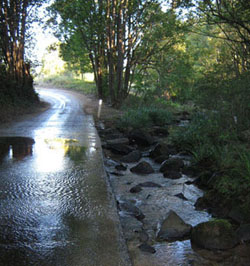 * Of countries containing large endowments of biodiversity, Australia is unique in another very significant way. Of all the countries classified as megadiverse, Australia is one of only two countries in the high income category. This position carries a special responsibility and implies that a high standard of biodiversity protection can be expected in Australia. It also carries with it an opportunity too for world leadership”. (Aust Govt website: State of Environment report 2001)
* Of countries containing large endowments of biodiversity, Australia is unique in another very significant way. Of all the countries classified as megadiverse, Australia is one of only two countries in the high income category. This position carries a special responsibility and implies that a high standard of biodiversity protection can be expected in Australia. It also carries with it an opportunity too for world leadership”. (Aust Govt website: State of Environment report 2001)
* The Earth is experiencing the 6th mass extinction event – the 5th was 65 million years ago. The conservation status of Australia's biodiversity reflects the global situation. Close to 50% of all mammal extinctions that occurred globally in the last 200 years were in Australia - http://www.greateasternranges.org.au/nature/wildlife/global-extinction-crisis
* Approximately 13% of all Australia's known vertebrate species are listed in Australia's Environment Protection and Biodiversity Conservation Act 1999 as either 'threatened' or 'vulnerable'. The number of terrestrial birds and mammals assessed as extinct, endangered or vulnerable on this list rose by 41% in the last decade.
* Known species extinctions Australia has experienced since non-Indigenous settlement have been primarily in arid/semi-arid climatic areas, however, significant loss of biodiversity has occurred in the forests and woodlands. The extinction of local populations and community assemblages continues with the degradation of ecosystem functionality. This local loss of biodiversity is partly recognised by the species and ecosystems formally regarded by each Australian state as threatened, as distinct from those listed nationally as threatened with global extinction.
* Tweed has the largest number of threatened flora in Australia. 80% of bush land in Tweed has high (or very high) conservation status” (State of the Environment Tweed 2009).
Clearly, this World Class environment deserves world class planning practices.
Conclusion
No wonder we have such a high percentage of biodiversity loss when we have people in power like the three Tweed Shire councillors who voted for this dam. Time for unenlightened councillors to get with the program – this is 2010, the Year of Biodiversity. Why do they think they are not responsible for intelligent governance of the environment for the people and future generations? Perhaps they should review #5 of council’s charter where it says to properly manage environment in a sustainable way?
http://www.savebyrrillcreek.com
http://candobetter.net/node/2857

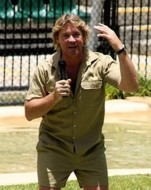 Mr Kelvin Thomson (Wills) Monday, 8 February 2010
Mr Kelvin Thomson (Wills) Monday, 8 February 2010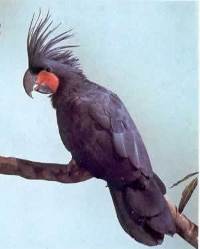
 (Illustration:Canetoad Anna B by Sheila N)
(Illustration:Canetoad Anna B by Sheila N)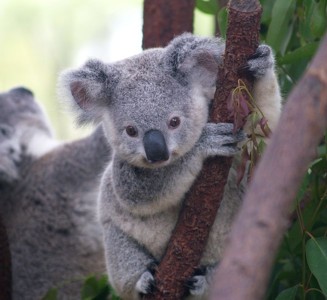 (photo: Wikimedia Commons)
(photo: Wikimedia Commons) (Photo source: http://www.epa.qld.gov.au/about_the_epa/public_reporting/epa_bulletin/issue_48_june_2009/index.html)
(Photo source: http://www.epa.qld.gov.au/about_the_epa/public_reporting/epa_bulletin/issue_48_june_2009/index.html)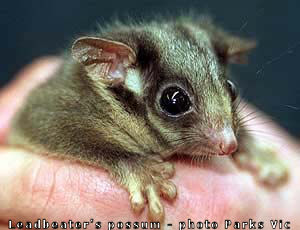
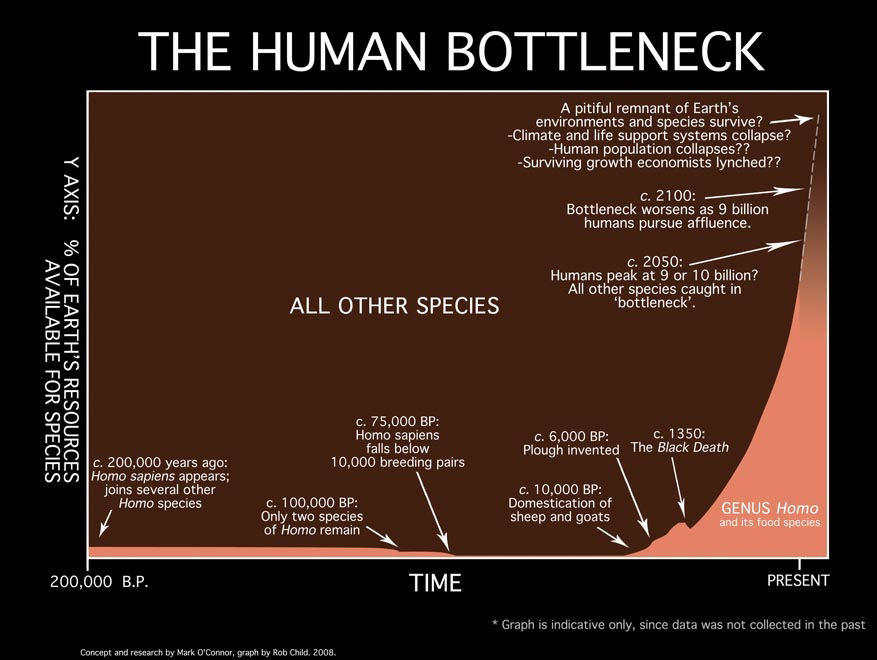
Recent comments